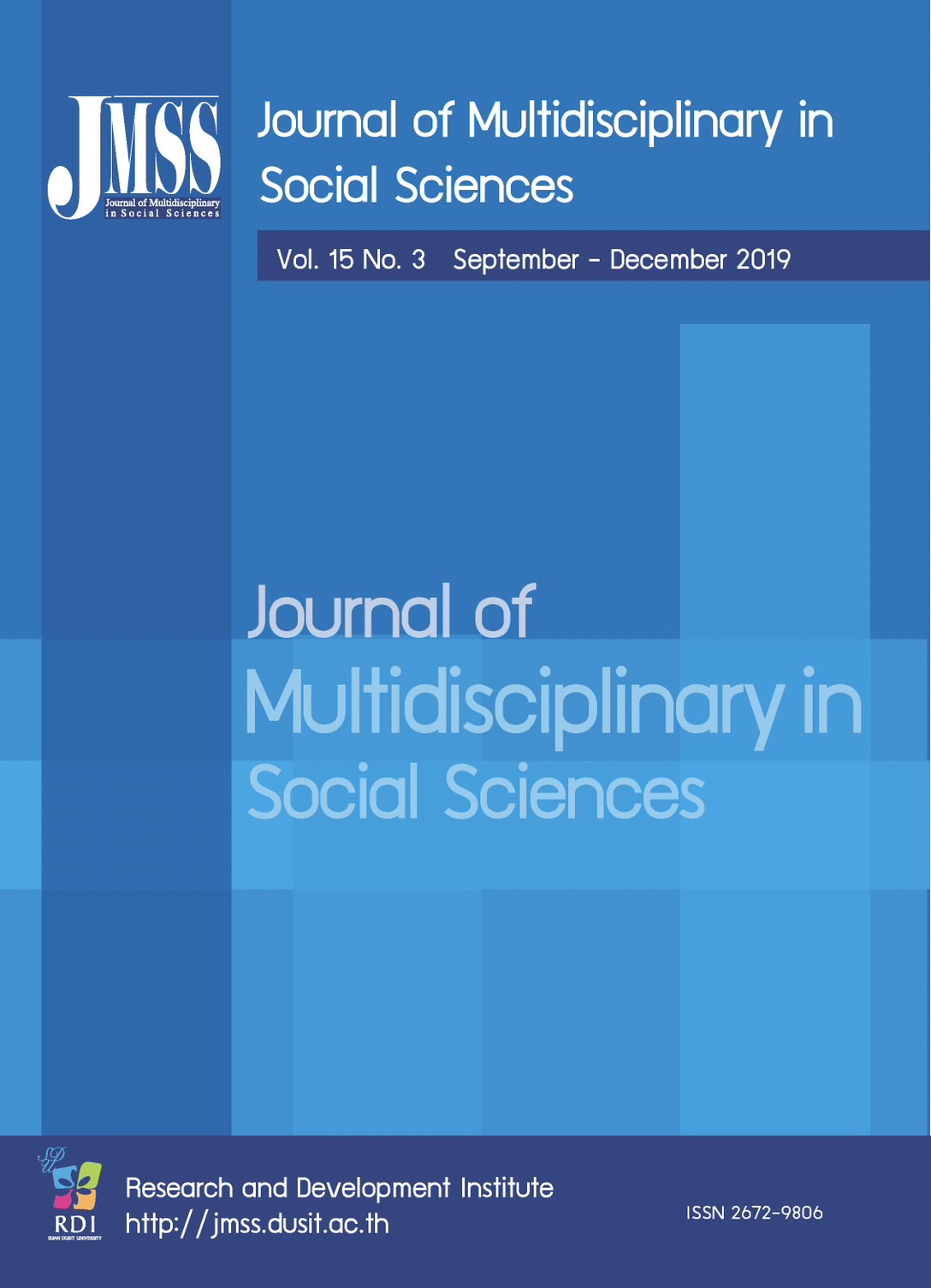Metadiscourse Markers Analysis Used in Communication Research Articles
Keywords:
Markers, Metadiscourse, Communication Research ArticlesAbstract
This research aims to analyze the metadiscourse markers used in communication research articles in terms of studying: (1) the frequency of using metadiscourse markers, (2) the differences between the metadiscourse markers used in the introduction part and the discussion part of the communication research articles and (3) the correlation of 14 metadiscourse markers in 4 categories of metadiscourse markers; self-mention words, attitudinal markers, boosters and hedge. The language data corpus used is 20 communication research articles and only the introduction parts and discussion parts of each research article were analyzed. The instruments used are (1) AntConc 3.2 computer program for research articles random and (2) PASW 18.0 computer program for statistical analysis. The findings revealed that: (1) the three most frequently used markers are attitudinal markers; adjective, booster; verb and hedge; modal verb, (2) there are 9 metadiscourse markers used in the introduction parts and the discussion parts that are significantly different and the other 5 markers are not significantly different and (3) there are 13 metadiscourse markers used in the communication research articles that show correlation and 1 marker that shows no correlation.
References
Ädel, A. (2006). Metadiscourse in L1 and L2 English. Amsterdam/Philadelphia: John Benjamins Publishing Company.
Crismore, A., & Farnsworth, R. (1989). Mr. Darwin and His Reader: Exploring Interpersonal Metadiscourse as a Dimension of Ethos. Rhetoric view, 8(1), 91-112.
Crystal, D. (1971). Linguistics. England: Penguin Books Ltd. Harwood, N. (2005). We Do Not Seem to Have a Theory … The Theory I Present Here Attempts to Fill This Gap: Inclusive and Exclusive Pronouns in Academic Writing. Applied Linguistics, 26(3), 343-375.
Hyland, K. (1998b). Persuasion in academic articles. Perspectives, 11(2), 73-103.
Hyland, K. (2003). Second Language Writing. Cambridge; New York: Cambridge University Press. Hyland, K. (2004). Disciplinary interactions: metadiscourse in L2 postgraduate writing. Journal of second language writing, 13(2), 133-151.
Hyland, K., & Tse, P. (2004). Metadiscourse in academic writing: A reappraisal. Applied linguistics, 25(2), 156- 177.
Hyland, K. (2005). Stance and engagement: a model of interaction in academic discourse. Discourse Studies, 7(2), 173-192.
Hyland, K. (2006). English for academic purposes: An advanced resource book. London: Routledge.
Kopple, V. (1985). Some Exploratory Discourse on Metadiscourse. College Composition and Communication, 36(1), 82-93.
Labov, W. (1989). The child as linguistic historian. Language variation and change, 1(1), 85-97.
Lyons, J. (1981). Language and Linguistics an Introduction. Cambridge: Cambridge University press.
Matthews, P. H. (1997). Concise Dictionary of Linguistics. Oxford: Oxford University press.
Mehrabian, A., & Ferris, S. R. (1967). Inference of attitudes from nonverbal communication in two channels. Journal of consulting psychology, 31(3), 248.
Salager-Meyer, F. (1994). Hedges and textual communicative function in medical English written discourse. English for specific purposes, 13(2), 149-170.
Schiffrin, D. (1980). Discourse Markers. England: Cambridge University Press.
Scollon, R., & Scollon, S. (1994). Face parameters in East-West discourse. In Ting-Toomey, Stella (ed.), The challenge of facework, 133-158.
Tang, R., & John, S. (1999). The ‘I’ in identity: Exploring writer identity in student academic writing through first person pronoun. English for Specific Purposes, 18(S1), 23-39.
Wei, R. (2017). Trends and patterns in communication research on Asia: A review of publications in top SSCI journals, 1995-2014. MedieKultur: Journal of media and communication research, 33(62), 12.
Downloads
Published
How to Cite
Issue
Section
License

This work is licensed under a Creative Commons Attribution-NonCommercial-NoDerivatives 4.0 International License.








